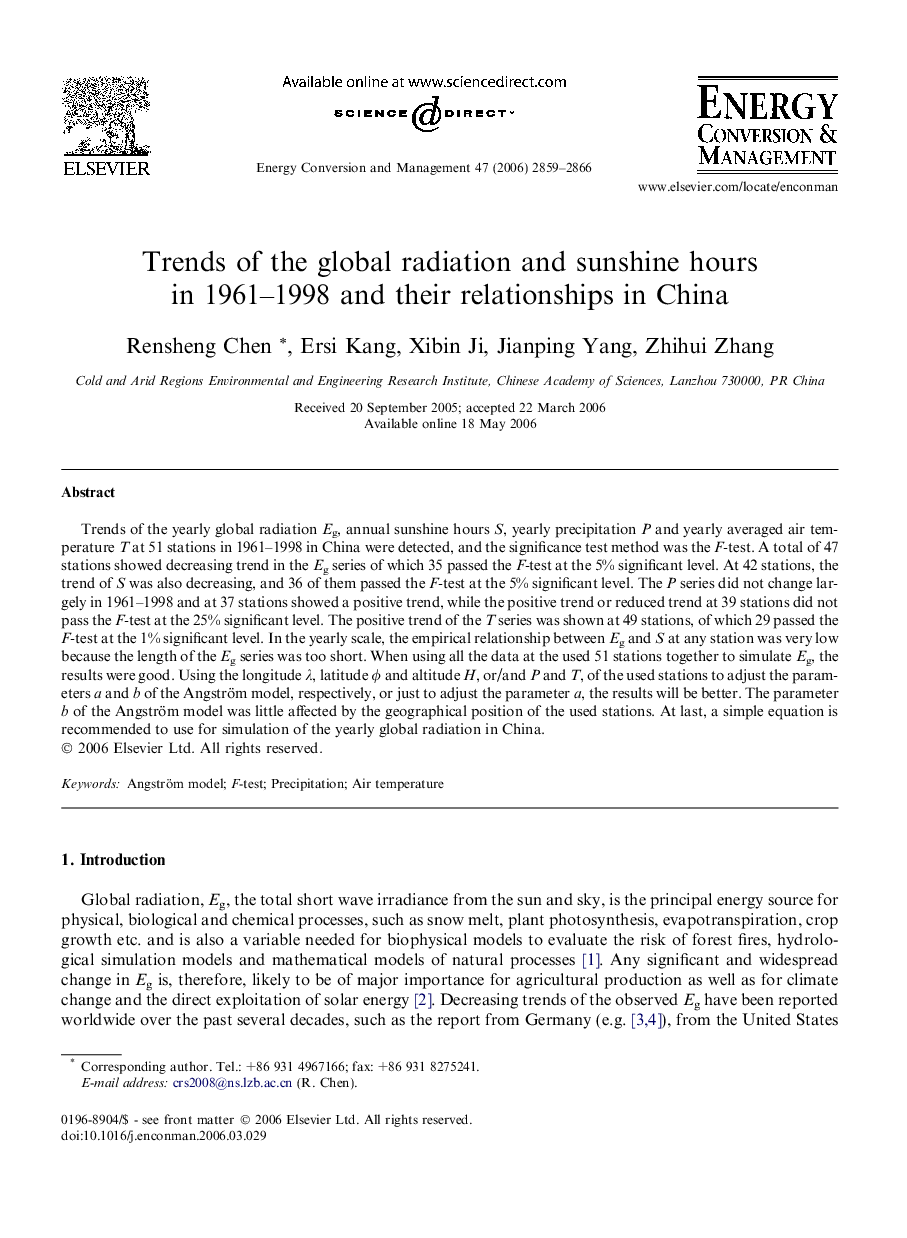| Article ID | Journal | Published Year | Pages | File Type |
|---|---|---|---|---|
| 762232 | Energy Conversion and Management | 2006 | 8 Pages |
Abstract
Trends of the yearly global radiation Eg, annual sunshine hours S, yearly precipitation P and yearly averaged air temperature T at 51 stations in 1961-1998 in China were detected, and the significance test method was the F-test. A total of 47 stations showed decreasing trend in the Eg series of which 35 passed the F-test at the 5% significant level. At 42 stations, the trend of S was also decreasing, and 36 of them passed the F-test at the 5% significant level. The P series did not change largely in 1961-1998 and at 37 stations showed a positive trend, while the positive trend or reduced trend at 39 stations did not pass the F-test at the 25% significant level. The positive trend of the T series was shown at 49 stations, of which 29 passed the F-test at the 1% significant level. In the yearly scale, the empirical relationship between Eg and S at any station was very low because the length of the Eg series was too short. When using all the data at the used 51 stations together to simulate Eg, the results were good. Using the longitude λ, latitude Ï and altitude H, or/and P and T, of the used stations to adjust the parameters a and b of the Angström model, respectively, or just to adjust the parameter a, the results will be better. The parameter b of the Angström model was little affected by the geographical position of the used stations. At last, a simple equation is recommended to use for simulation of the yearly global radiation in China.
Keywords
Related Topics
Physical Sciences and Engineering
Energy
Energy (General)
Authors
Rensheng Chen, Ersi Kang, Xibin Ji, Jianping Yang, Zhihui Zhang,
